I’m going to try to explain the financial package that Friends of Hastings Pier put together as simply as I can. This is both an exercise in extreme transparency and a practice run for some workshops I’m planning about how money works in land & building development (from a community perspective of course).
I’m not going to name our commercial operator partner but detailed information about him and his support team was submitted to the Administrators and the estate agents on 14th June, along with the legal heads of terms of the agreement between us.
First a quick rant…
Those of us who like to get things done often complain about procurement rules but we recognise they are there to ensure fairness and clarity. Instead throughout this administration process we have been lost in the world of the estate agent where there are no rules, just a driving desire to close the highest possible deal at the soonest possible time. That world of private property is also well known to be macho, aggressive, secretive, and unscrupulous. It is absolutely the wrong approach to a civic/community asset.
At no point in the process since submitting our first proposal on 12th April did the Administrators explain what was going to happen next, how or when. When we met them on 11th May we asked to be put in touch with other bidders but heard nothing. On 13th June they asked us to ‘set out any revised plans by Noon tomorrow’ but did not commit to what they would do with them.
I believe a more appropriate administration process would have been:
- Describe and promote what you’re doing and work with people who show interest in the matter, explain what you’re looking for, encourage collaborations. As new people approach you, meet with them and then ask if they wish to meet with others who have shown interest so far. Ask all potential bidders to make available an overview of their vision for wider publication
- After 3-4 months of that work, set a date with 6 weeks notice by which all potential proposals must come forward in whatever combinations they have chosen. While submitting detailed info to the Administrators, bidders also update their overview proposals online.
- Have an assessment process (2 weeks minimum) based on a clear set of criteria. Consult closely with relevant stakeholders, most obviously the local authority, but also including staff, volunteers, community and user groups.
- Make a decision – present it publicly, including to the community shareholders
- Implement it.
This could have been done in the same overall timeframe but been a better process leading almost certainly to a better decision.
If this had been the process, and it had been clear from the start, then Friends of Hastings Pier could have focused on the job it initially set out to do – to give shareholders and supporters a voice in the process and the decision. Instead we were forced to take a position as a ‘bidder’ in a secretive and non-collaborative environment.
Even so, though we will continue to complain about the process, we are convinced that even within that approach, ours was the best overall bid and should have been chosen.
SO HERE’S THE DETAIL:
By the way it is revolutionary to share this kind of information about a bid publicly. Isn’t that ridiculous?!
PURCHASE FREEHOLD OFFER: £55,000. This was emailed at 15.44 on 15/6/18 and followed up formally by our lawyer. This amount, and indeed more if necessary, was available in the form of a cheque from Jericho Road Solutions, as captured on camera by numerous media outlets that day. I have track record in applying Jericho Road assets to help make local projects happen. We were able to purchase Rock House because I put £85k on my mortgage. In this case it would have been every last penny we had in the bank. The amazing thing about finance in the community is that I could take that action knowing that others would help share the burden.
SECURED AVAILABLE FINANCE: Total £750k, comprising £180k Crowdfunder (see below) and up to £570k secured on Operator assets. This would be used for working capital, both to install and fit out the new temporary structure, and to manage and underpin the costs until December 2020. At that point the pier would close for 3 months while the new permanent building was readied for the 2021 Season.
CROWDFUNDER: Crowdfunder approached us on 25th April, a couple of days after the Urgent Public Meeting, via a conversation happening in the background with community shares specialist Dave Boyle. They had already put together a draft page. They have been brilliantly supportive throughout and we are gutted that they won’t get their fees. One of the great legacies of this process is the 800+ comments that explain why people donated. Very powerful indeed.
We had to take a very rapid decision about target amount and date so that it could go live quickly. The noises from the Administrator, never clearly stated, never in writing, had been that we needed £1.2M – a figure apparently based on the pier losing £50k ever month, itself based on figures from February 2018. We rounded that down to £1M and said we’d get half through Crowdfunder and half from grants. In the meantime we got on with producing our financial model to see what a more realistic working capital requirement would be.
But the target of £500k was too high for that kind of individual donor fundraising, especially in just one month. That meant that no amount of donating would be worth it – like trying to vote against in a safe seat. We had to do something about it!
Chris Brown of igloo regeneration is an extraordinarily good problem-solver. Even he was pushed to his limits, trying to support a not-yet-incorporated organisation in an uncertain situation. But with his patience we worked out a good, clear deal. Igloo would provide £300,000 to the Crowdfunder as a short-term loan, repayable within 6 months with no interest charged.
That certainly provided a great boost and within a few days a further £40k came in from other donors (in small amounts from £5 to £5,000). This ‘spurt’ and ‘splutter’ of crowd-funding is extremely stressful – end up checking it every 5 minutes!
As we headed towards the deadline of 31st May it was going well but we were acutely aware that it was ‘all or nothing’. Crowdfunder called and asked if we wanted to extend – we hadn’t even realised it was an option! That’s where the 30th June deadline came from.
By the time the Administrator announced the decision (9.30pm 15/6) the Crowdfunder had breached £475k and was clearly going to reach target. We would have drawn down the money, paid the Crowdfunder fees (£19k), repaid igloo and had £181k in the bank by 7th July.
Before explaining how we could take on the pier if we only had £181k, let me say something about support ‘in the pipeline’.
FINANCIAL SUPPORT IN PROGRESS AS AT 15/6/18:
- Power to Change – community business fund application submitted 5/6 – £300k
- Coop Foundation – positive ongoing discussions, application in assessment – £90k
- Esmee Fairbairn – approached us 15/6 with an offer to work up an emergency application for c.£60k
- Coastal Revival Fund – application in progress for deadline 5/7 – £50k
- Potential local private investor – positive discussions were ongoing with interest in “exploring ways to put the Pier’s finances on a firmer footing”
- Comprehensive funding search by our fundraising expert Julie Eason concluding it was ‘absolutely’ possible for FOHP to raise £1.6M for a new permanent building
OTHER SUPPORT:
Lots of people have asked ‘why don’t you contact the bands that played on the pier?’ FOHP volunteers Amy Walker and Andrew Pearce have between them contacted pretty much all the managers and tweeted all the musicians who ever played there. Lots of goodwill, some swag to auction (thanks especially @BillyBragg), offers to play benefit gigs and to perform on our future pier.
Right up to the last minute, as the story spread nationally across all the papers, we were being approached by all kinds of people wanting to see if they could help, including some pretty big hitters. There is no doubt it had begun to capture the imagination – just at that moment the Administrators gave it away ‘for a song’ – I wonder was it ‘(Can’t Get No) Satisfaction’ or ‘Madness’?!
Two worlds that are likely to support Hastings Pier that we had only just begun to mobilise:
- community businesses – the sense of solidarity was growing, especially after the tweet from the Bevy community pub in Brighton. Maybe this siphoning off of community assets into private ownership will wake the movement?
- architecture – with such excellent support from dRMM and from the University of Brighton’s Architecture School, we perhaps could have done more to get the attention of the architecture world sooner. Perhaps they’ll listen now?
FINANCIAL MODEL:
Our financial model showed that the working capital available from the Crowdfunder, the investment by the operator in the installation and fit-out of the temporary structure (estimated around £100k, (of which in this model £30k is shown as an FOHP contribution so that we knew that he would close the Crowdfunder gap if that became necessary in a hurry), and his guarantee to further underwrite pier working capital up to a maximum investment of £570k over 3 years, would be more than adequate for the Transition period. When tested for sensitivity in terms of visitor numbers and average spend per head the worst case scenario shows a total sunk capital of £630k in that period (in other words well within our guaranteed capital available).
The detail of projected income and spend can be explored on the spreadsheet by those that choose to do so. The important conclusion is that the pier business would likely lose £100-£250k in Year 1, smaller losses or breakeven in Year 2, and make a surplus in Y3 of £50-120k.
* * *
There is no doubt that the Pier is a challenging business to predict. My Christmas 2009 was absorbed in writing the first financial plan – no tourism expert, I made it up as best I could. Luckily we quickly found Leisure Development Partners and they put us on the right footing. I am convinced that the reason the Pier stumbled in 2017 was that Phase 2 – always essential to the LDP plan – had been forgotten and the all-important narrative that sustains these great totemic assets was grinding to a halt.
I spent many hours last year, paid for the first time ever by Hastings Pier Charity, to create the spreadsheets, from scratch, that could at least model what was going on financially and what change would need to happen to turn it around. I have never seen any financial information since then about Hastings Pier that wasn’t based on those spreadsheets. You won’t be surprised to know that my hourly rate is a lot lower than the Administrators.
I know more about piers than I ever expected to, but my role was not to be the expert – rather to hook the necessary expertise into the passionate grassroots, to draw on everything we know, the wisdom of crowds and the immense human asset of Hastings & St Leonards and their supporters everywhere.
I’ve talked about the money here, but at the core of the plan to drive the business were the people of Hastings & St Leonards. One particular person who always gave me hope was the wonderful Adam Wide with his larger-than-life, boy-scout persona and his deep understanding of creative content for a visitor attraction. Both of us knew that there isn’t a better place in the world to go looking for ‘animators’ than this eccentric, extrovert, extraordinary town. Some things are hard to value on a spreadsheet.
I hope that this gives some answers to the question of how the money would have worked. I’m happy to answer further questions and would welcome comments on how to present what is quite complex information more simply. I’m going to have a go at doing something similar for Rock House and Ore Valley in the next few weeks. I’m sick of people sniping in the background when they don’t know the facts. An entrepreneur is someone who sets out to do something when they don’t yet control the resources to do it. So I’m happy to share because I take pride in my ability to put together collaborative packages of financial and other support for projects that matter to people.


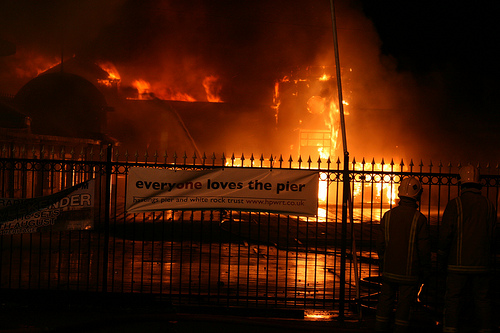
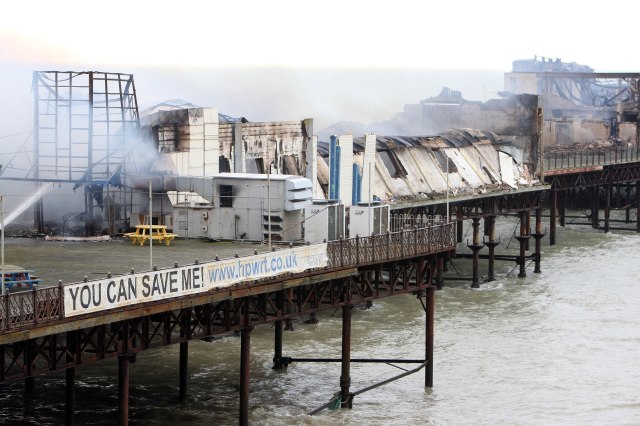






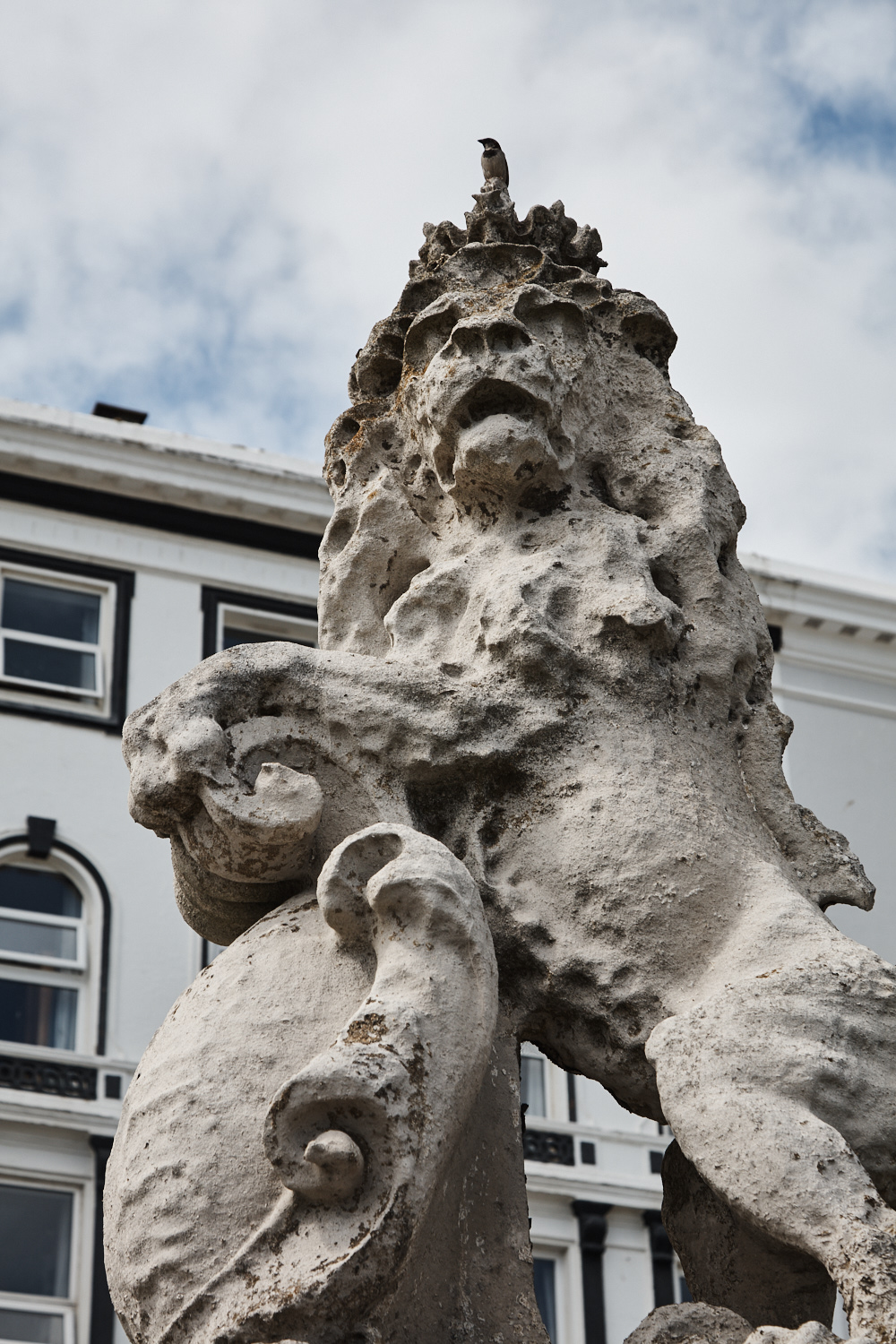
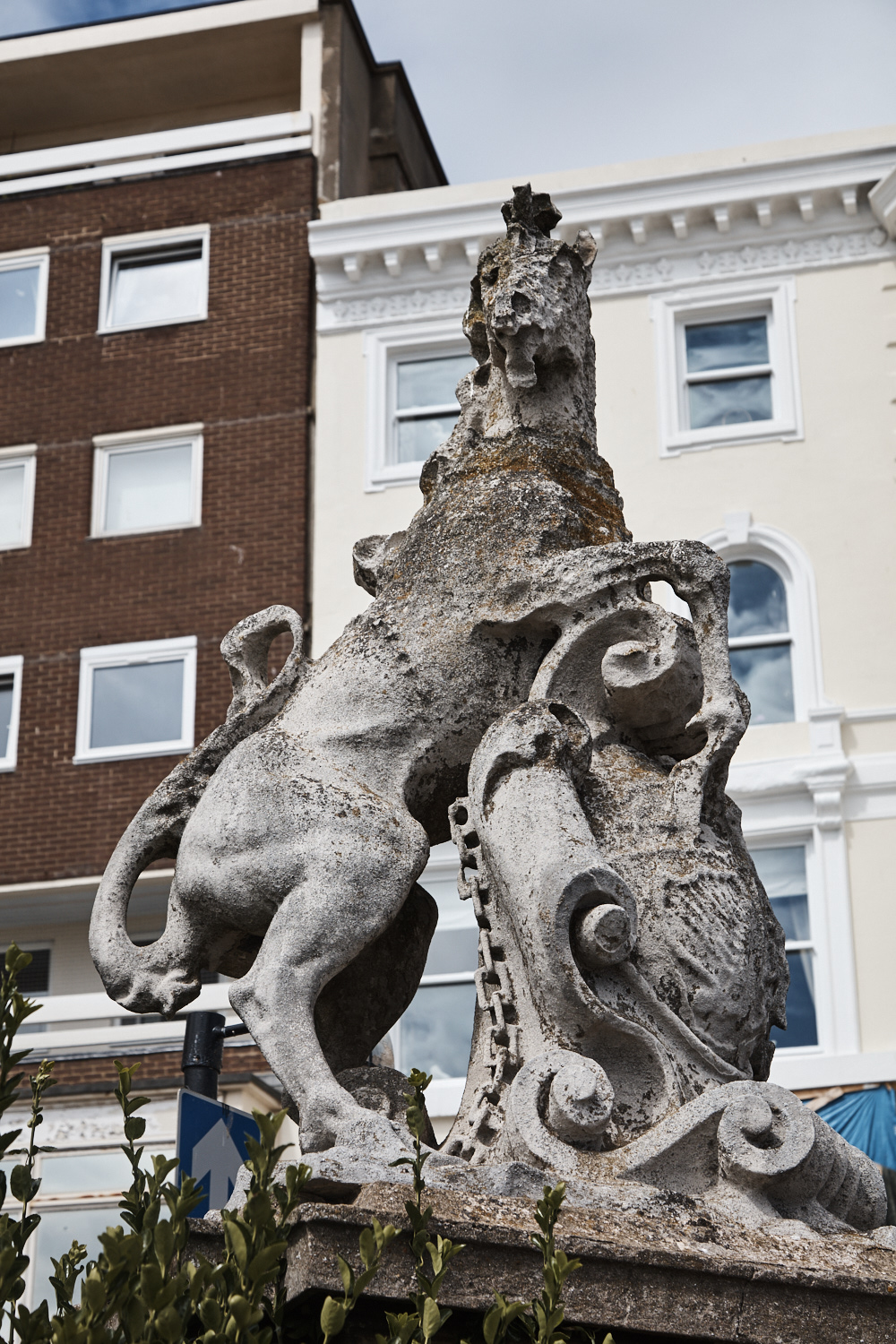


 And now, this…
And now, this…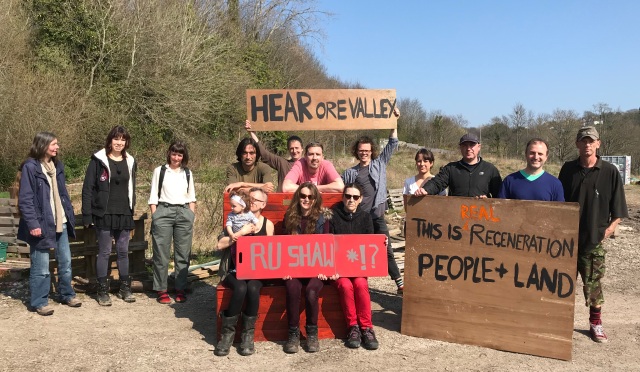
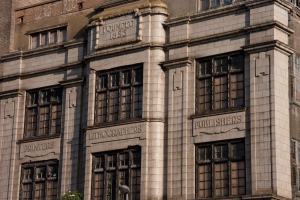
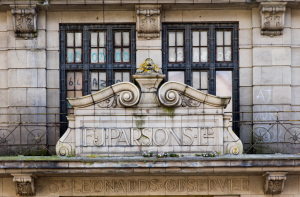



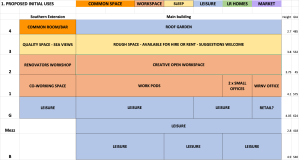
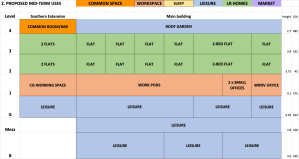
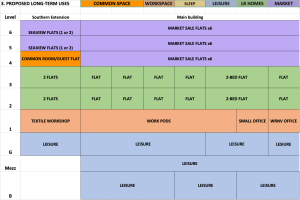
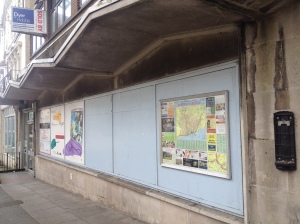

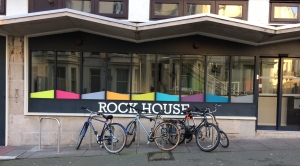


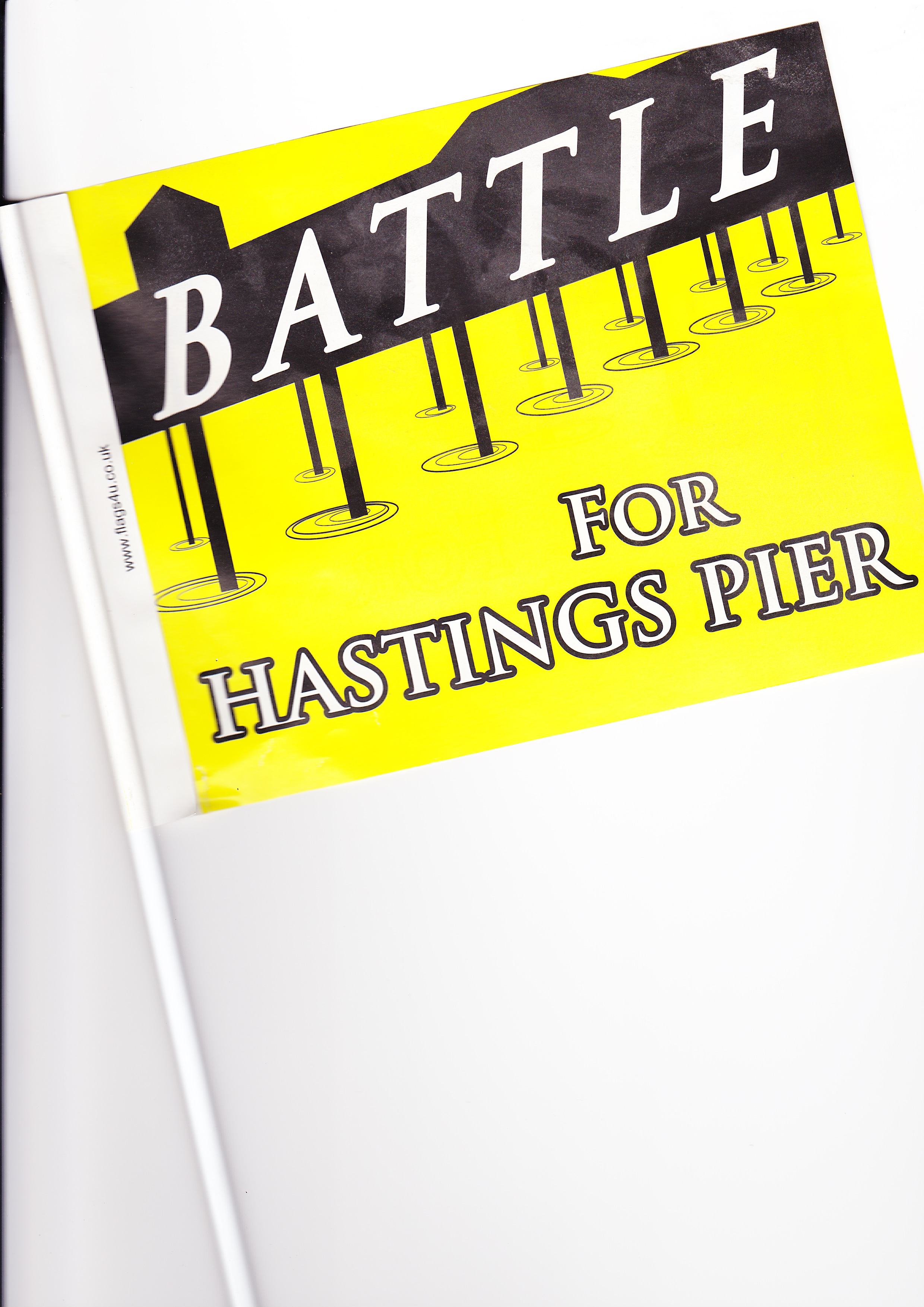
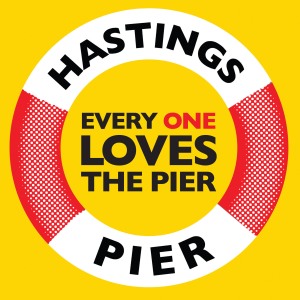

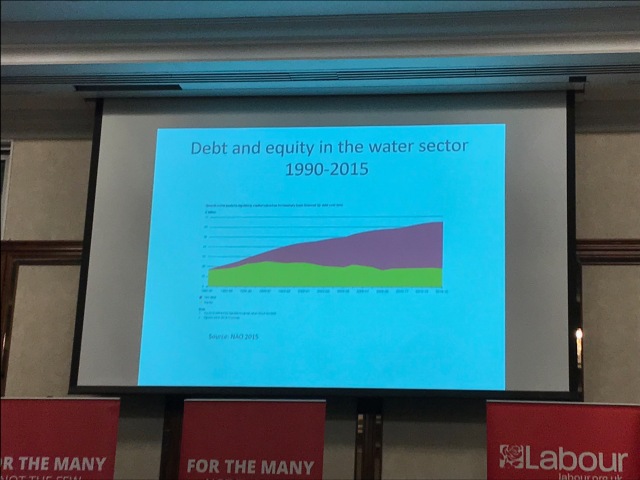
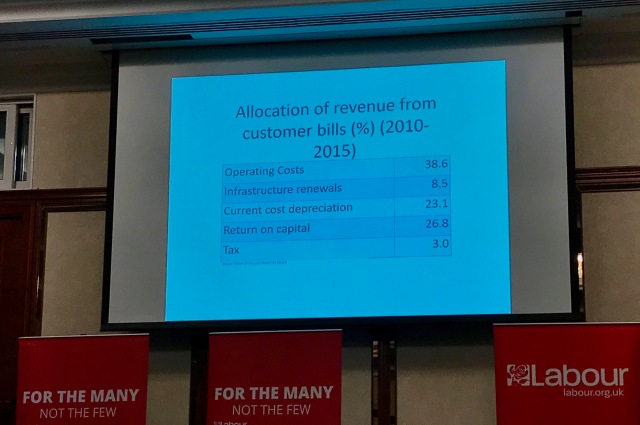

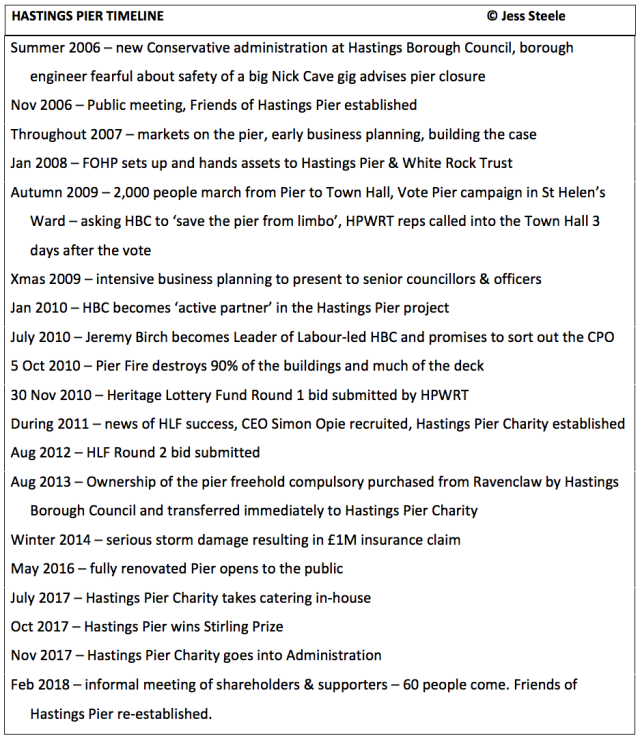




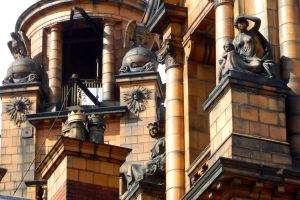

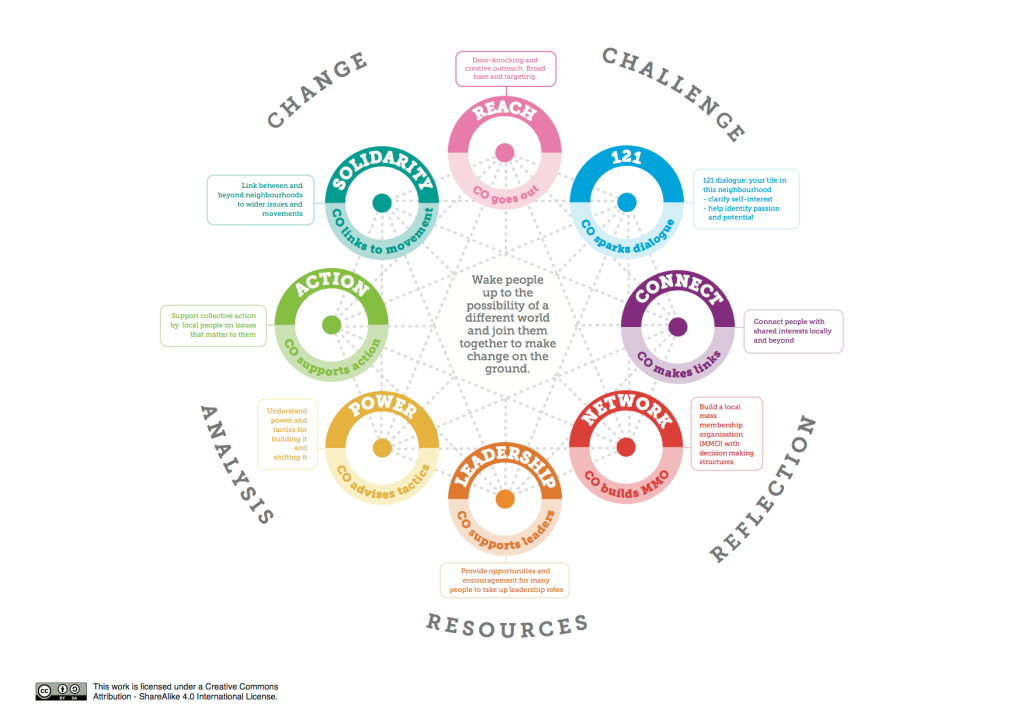
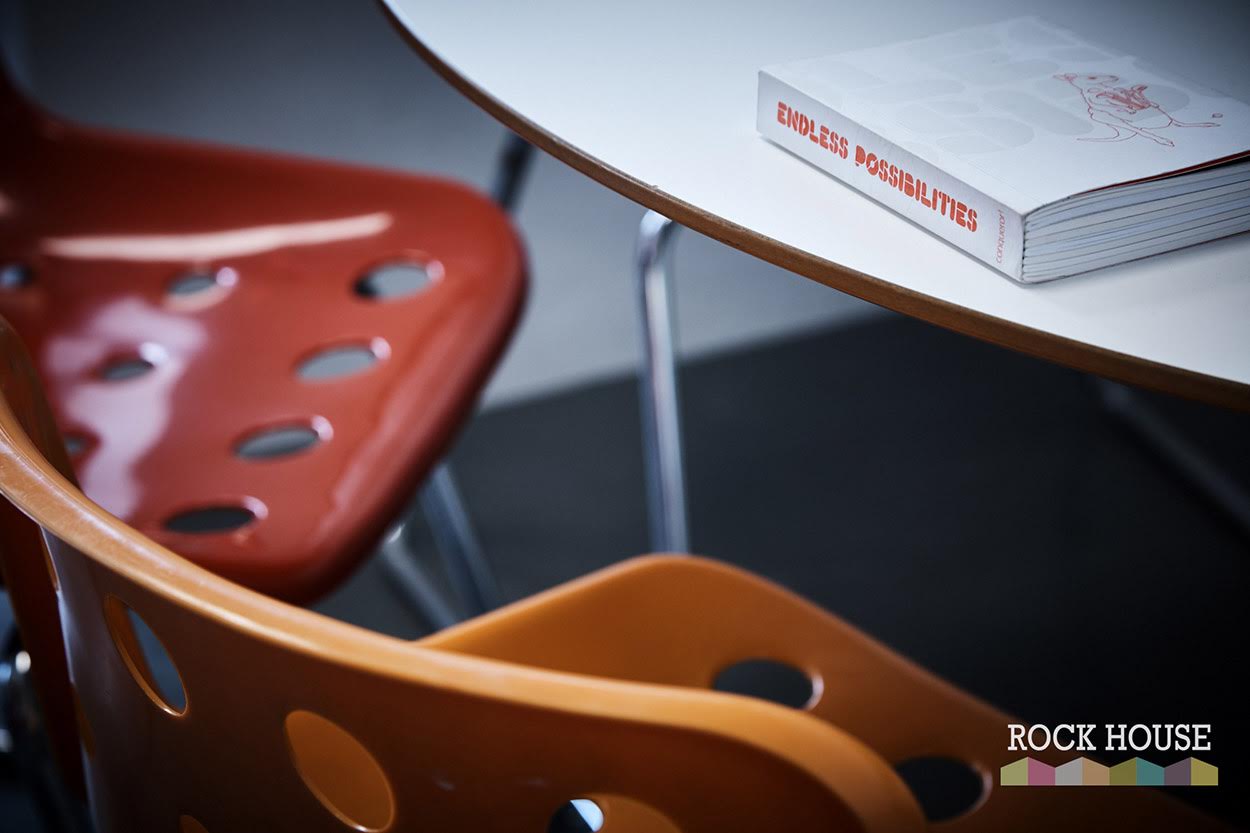
Friends of Hastings Pier was set up (again) on 3rd February 2018 to give shareholders and supporters a voice. We were working towards a big meeting, preferably with the Administrators and HLF. At the end of March we were suddenly told we had until 12th April to put in a bid. We went ahead – proposing a split of the ‘top’ (above deck) and ‘bottom’ (structure), and developed an indicative business plan to show that, with Phase 2 investment and operated commercially, the top could make enough money to pay a rent to a community trust freeholder that would be responsible for the bottom forever. This model of separation is operated by several piers nationally, including Bournemouth and Cromer.